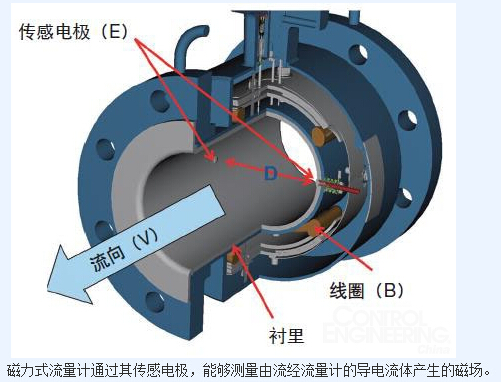



Selection of electromagnetic flowmeter lining
| Lining material | Main performance | Scope of application |
| Neoprene CR | 1. It has the best elasticity, high breaking force and good wear resistance. 2. It is resistant to corrosion by low-concentration acid, alkali and salt, but not resistant to corrosion . | 1. <60℃ 2. Tap water, industrial water, sea water, sewage, mud, ore slurry. 3. Diameter range: DN40-2400 |
| Polyurethane rubber PU | 1. The best corrosion resistance (equivalent to ten times that of natural rubber). 2. Poor acid and alkali resistance. | 1. <40℃ 2. Neutral and strong abrasive ore slurry, coal slurry, mud. 3. Diameter range: DN15-600 |
| Polytetrafluoroethylene F4 | 1. The performance is very stable, and it can concentrated alkali and various organic solvents. It is not resistant to corrosion by chlorine trifluoride, high-temperature trifluorooxyfluoride, high-flow liquid oxygen, and ozone. 2. Poor wear resistance and bonding performance. | 1. <150℃ 2. Strong corrosive media such as acid, alkali, salt, etc. 3. Diameter range: DN15-1000 |
| FEP F46 | This material has the corrosion resistance of polytetrafluoroethylene and the unique strong adhesion to metal, and has the best negative pressure resistance. | 1. <100℃ 2. Strong corrosive media such as acid, alkali, salt, etc. 3. Diameter range: DN15-350 |

Selection of Electromagnetic Flowmeter Electrodes
| Electrode Materials | Corrosion and wear resistance |
| 316L Stainless Steel | Applicable: 1 Industrial and domestic water, raw well water, urban sewage and other neutral solutions. 2 Weakly corrosive acids, alkalis and salts. |
| Hastelloy B | Applicable: 1. Non-oxidizing acids such as hydrochloric acid (concentration less than 10%). 2. Sodium hydroxide (concentration less than 50%), ammonium hydroxide alkaline solution of all concentrations. 3. Phosphoric acid, organic acids. Not applicable: Nitric acid |
| Hastelloy C | Applicable: 1 Mixed acid, such as a mixed solution of chromic acid and sulfuric acid. 2 Oxidizing salts such as Fe+++, Cu++, seawater. 3 Phosphoric acid, organic acid Not applicable: Hydrochloric acid |
| titanium | Applicable: 1 Salts, such as: (1) Chlorides (chloride/magnesium/aluminum/calcium/ammonium/iron, etc.). (2) Sodium salts, potassium salts, ammonium salts, hypochlorites, seawater. 2 Alkaline solutions of potassium hydroxide, ammonium hydroxide, and barium hydroxide with a concentration less than 50%. Not applicable: Reducing acids such as hydrochloric acid, sulfuric acid, phosphoric acid, and hydrofluoric acid. |
| Tantalum | Applicable: 1 Hydrochloric acid (concentration less than 40%), dilute sulfuric acid and concentrated sulfuric acid, excluding fuming sulfuric acid. 2 Chlorine dioxide, ferric chloride, hypochlorous acid, sodium cyanide, lead acetate, etc. 3 Nitric acid (including fuming nitric acid) and other oxidizing acids, aqua regia with a temperature below 80°C. Not applicable: alkali, hydrofluoric acid |
| Platinum Iridium | Applicable: Almost all acids, alkalis, and salt solutions (including fuming sulfuric acid and fuming nitric acid). Not applicable: Aqua regia, ammonium salts |